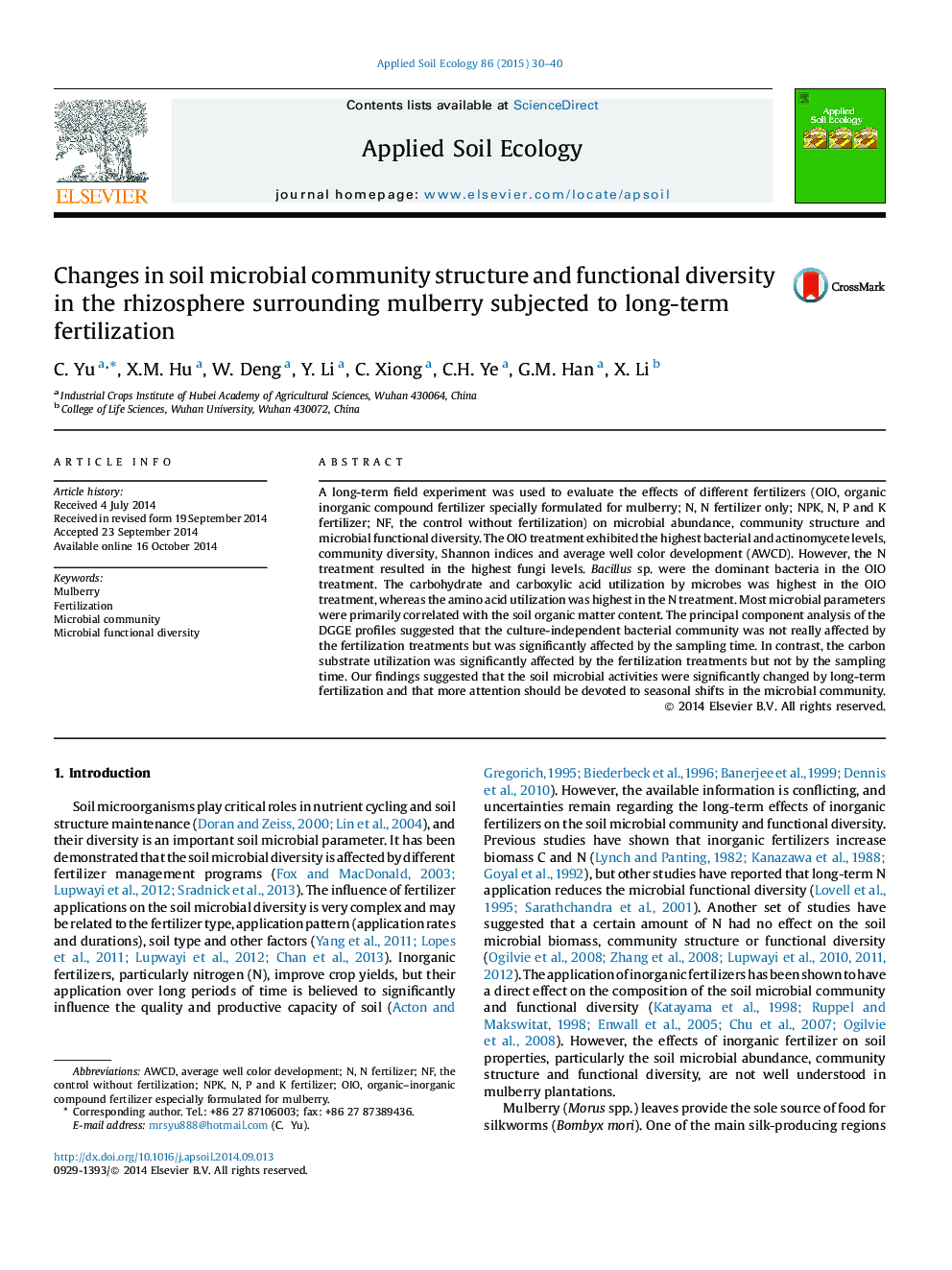| Article ID | Journal | Published Year | Pages | File Type |
|---|---|---|---|---|
| 4382090 | Applied Soil Ecology | 2015 | 11 Pages |
•Impact of different fertilizers on soil microbial characteristics.•The OIO treatment exhibited the highest bacterial and actinomycete levels and AWCD.•The N treatment resulted in the highest fungi levels.•Bacillus sp. were the dominant bacteria in the OIO treatment.•Most microbial parameters were correlated with soil organic matter content.
A long-term field experiment was used to evaluate the effects of different fertilizers (OIO, organic inorganic compound fertilizer specially formulated for mulberry; N, N fertilizer only; NPK, N, P and K fertilizer; NF, the control without fertilization) on microbial abundance, community structure and microbial functional diversity. The OIO treatment exhibited the highest bacterial and actinomycete levels, community diversity, Shannon indices and average well color development (AWCD). However, the N treatment resulted in the highest fungi levels. Bacillus sp. were the dominant bacteria in the OIO treatment. The carbohydrate and carboxylic acid utilization by microbes was highest in the OIO treatment, whereas the amino acid utilization was highest in the N treatment. Most microbial parameters were primarily correlated with the soil organic matter content. The principal component analysis of the DGGE profiles suggested that the culture-independent bacterial community was not really affected by the fertilization treatments but was significantly affected by the sampling time. In contrast, the carbon substrate utilization was significantly affected by the fertilization treatments but not by the sampling time. Our findings suggested that the soil microbial activities were significantly changed by long-term fertilization and that more attention should be devoted to seasonal shifts in the microbial community.
